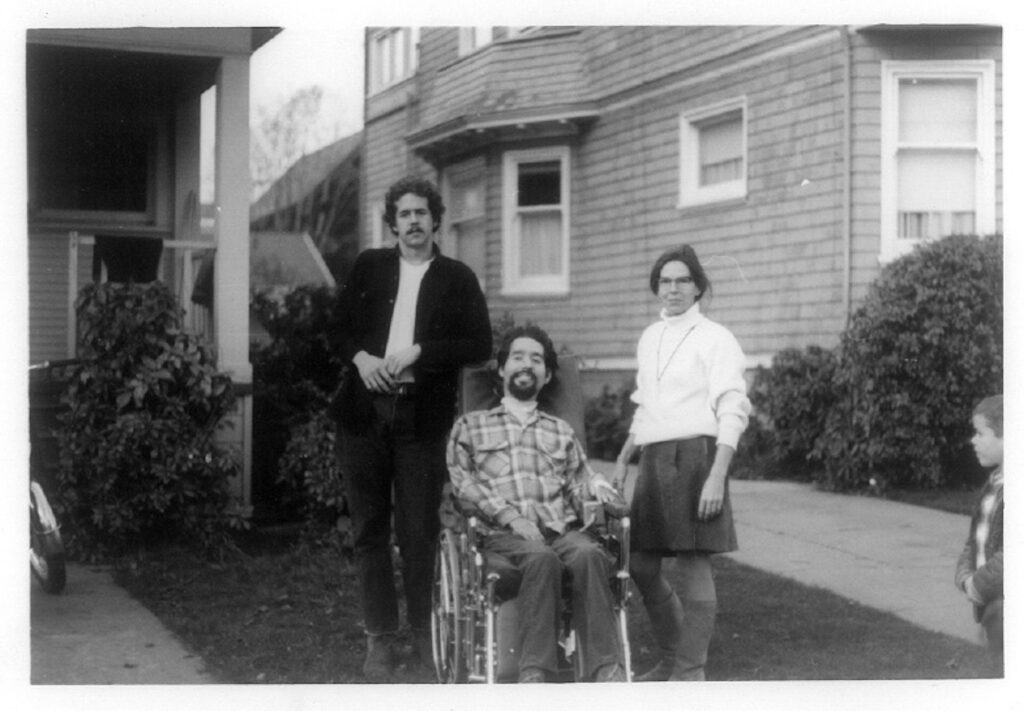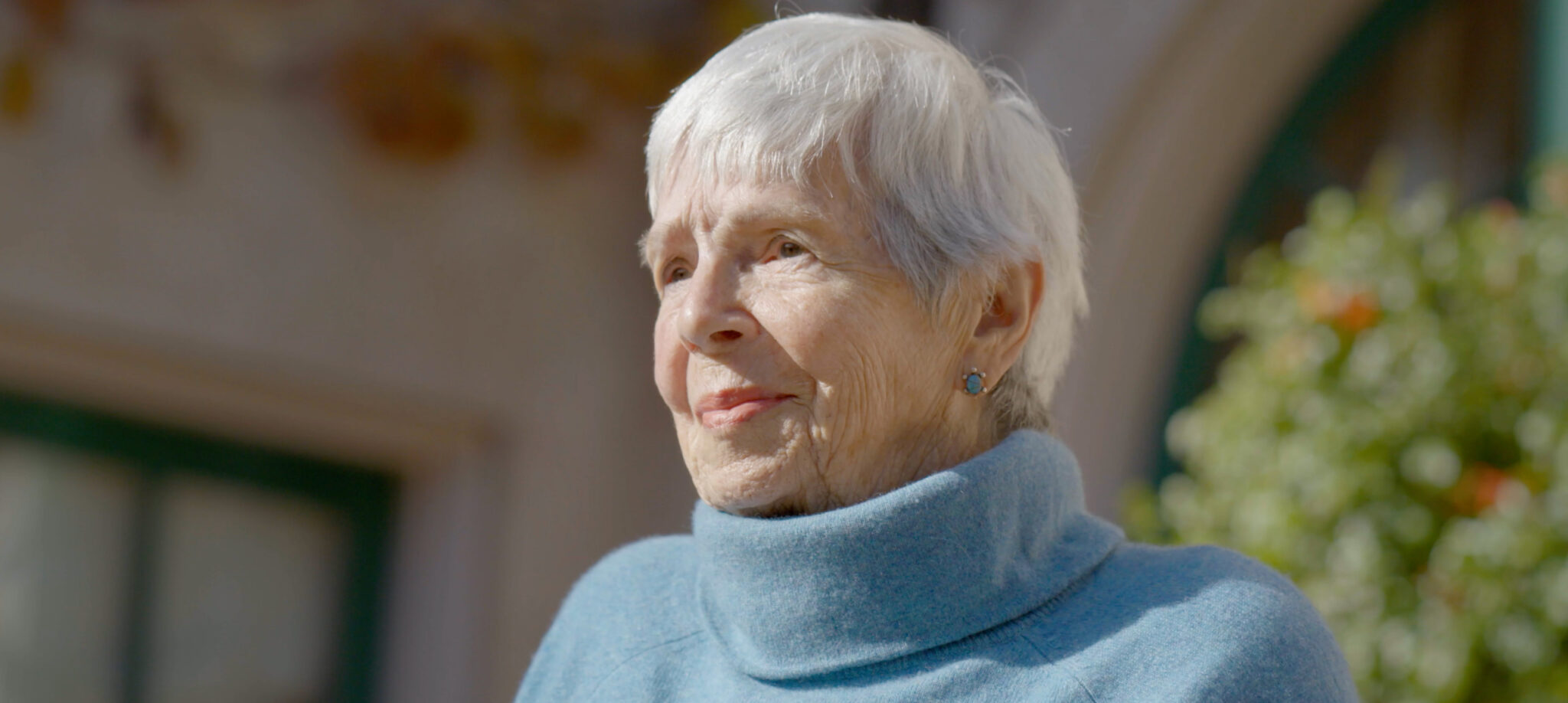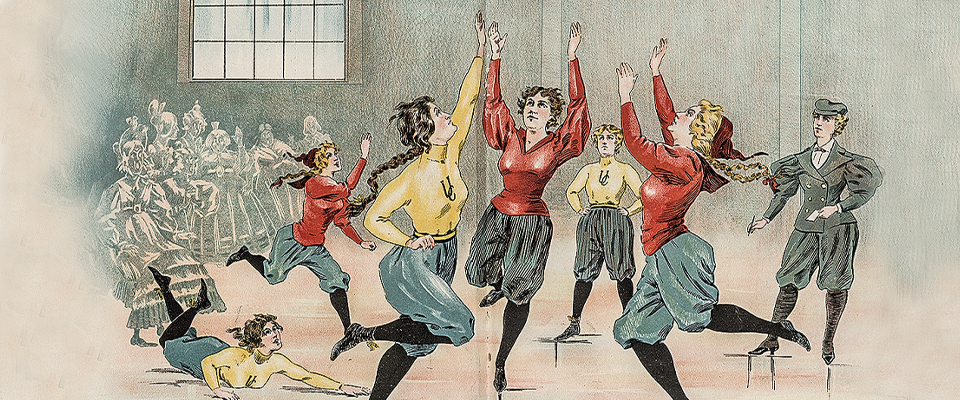Nowadays, people look back on the 1950s as the Happy Days, but for the kids who grew up during that time, it was anything but. Hovering over them were the twin terrors of The Bomb and a raging polio epidemic.
One victim of the latter was Zona and Verne Roberts’ eldest son, Ed. He was a happy kid who could run like the wind and loved playing sports with his friends. But in 1953, when he was 14, he was diagnosed with polio—or, as they called it then, infantile paralysis—and he came home from the hospital paralyzed from the neck down, dependent on an iron lung to breathe for him. The Salk vaccine came two years later, but it was too late for Ed.
“The next morning, I called the doctor to find out how things were going, and I said, ‘I’m so glad he lived!’ says Zona, now 102. “And he said, ‘What do you mean you’re glad he lived? Would you like to spend the rest of your life in an iron lung? He’ll just be a vegetable for the rest of his life.’”
When she told Ed the doctor’s words, he quipped, “If I’m going to be a vegetable, I choose to be an artichoke—prickly on the outside and a sweet heart on the inside.”
Social services for patients like Ed were virtually nonexistent, but Zona insisted that he come home instead of being institutionalized—the standard practice at the time. She fought various bureaucracies for him to finish high school, go to junior college, and finally enroll at Cal, where he became the first quadriplegic to graduate, in 1964. He added a master’s in political science, also from Cal, two years later.

Ed was homeschooled at first, but Zona kept finding ways to reintegrate him into the world, first by auditing classes via telephone. “He could move the toes of his left foot, so we set up a phone system where he could tap his toes on a lever to allow everyone in the classroom to hear what he was saying.”
The next step was to arrange for him to attend in person once a week, where he could see and be seen. “He was so self-conscious at first because the last time he saw those kids, he was playing baseball with them. He had somebody else take notes for him while he was paying attention to what was going on. When he got home, I would bathe him and put him in the iron lung. When he had to write a paper, he would dictate it, and I would write it out.”
But it was a battle every step of the way. When Ed was set to graduate from high school, he was told at the last minute that he wouldn’t get his diploma because he hadn’t completed P.E. or driver’s education.
“Can you believe that? Here was a 19-year-old boy; he would have loved to take driver’s ed or phys ed. But it was pointless because he would never be able to use those skills. Think of all the effort he went through just to be alive! But I had gotten involved with the PTA, and I knew what to do: You go up the ladder.
“I called for an appointment to talk to the superintendent, and he sent one of his staff to talk to us. The guy stood at the foot of Ed’s bed and said, ‘Well, Ed, you wouldn’t want a cheap diploma, would you?’ He was lucky to get out of the house with his balls intact! I was raised to be a very quiet girl, but I learned to speak out because of Ed. After he left, the two of us just burst out laughing.”
The matter made it all the way up to the school board, where a friend of Zona’s, Mimi Haas, was a member. “Before I even had a chance to speak, they announced that Ed would get his diploma. It was all a done deal before we walked into the meeting. But would he have gotten that diploma if Mimi hadn’t gotten so pissed at the guy?”
He then attended the College of San Mateo for three years, where an English teacher named Jean Wirth became a valuable mentor. When it came time for him to go to college, Zona first thought of UCLA because the campus was flat and accessible by wheelchair. But Wirth suggested Cal instead.
“I was thinking about accessibility; she was thinking about education,” Zona admits. “The other good thing about Cal is that UCLA is an isolated campus, but Cal is in the middle of town, which makes it more accessible for people with physical disabilities. You can go to class, live on campus, or go out to a restaurant or a movie theater.”
He was accepted at Cal because his grades were so good, although he had to fight for the financial support he needed from the California Department of Rehabilitation to attend because the rehab counselor thought he was too severely disabled to ever get a job, a view seconded by one of the deans at Cal, who purportedly said, “We’ve tried cripples before, and it doesn’t work.”
“And when we drove him to Sproul Hall, they took one look at him and said, ‘Where is he going to live? Our floors aren’t strong enough to support an 800-pound iron lung.’ The Dean of Men said we should call Dr. Henry Bruyn, the director of Cowell Hospital, who had worked in the polio epidemic. And Dr. Bruyn said, ‘Ed, it’s about time you people who were in the epidemic were coming to college. Let’s see what we can do.’ And he opened the doors of Cowell to Ed, who wasn’t crazy at first about living in a hospital again, having done that for quite a while already. But he accepted the offer on the condition that the area where he lived be turned into a dormitory space, not a medical facility.”
His admission broke the ice, and other disabled students joined him there. It was the beginning of the Cowell Residence Program. Feeling empowered, the students started calling themselves the “Rolling Quads” and when a rehab counselor threatened two of them with eviction, the Rolling Quads organized a protest that led to his transfer. Soon they were getting requests for advice from disabled people all over the country.
The Rolling Quads then turned their attention to the wider community, creating the Berkeley Center for Independent Living, the first service and advocacy program run by and for people with disabilities, which has inspired the creation of some 400 such centers in the United States and in 20 nations around the globe. Their first project was the curb cuts up and down Telegraph and Shattuck Avenues. In 1975, Governor Jerry Brown appointed Ed to be director of the state Department of Rehabilitation, the same agency that had once called him too disabled to ever get a job.
On April 5, 1977, he led what became a successful 25-day sit-in at the Department of Health, Education, and Welfare office in San Francisco that compelled HEW to finally enforce the Rehabilitation Act of 1973, which forbade discrimination against people solely because of their disabilities.
After earning his master’s, Ed worked toward his Ph.D. “But he never finished it because he got distracted by saving the world,” says Zona. In 1984, he received a MacArthur “genius” grant and used the money to found the World Institute on Disability.
Zona also studied at Berkeley, enrolling at age 44. She majored in English and graduated in 1969, before adding a teaching certificate in 1970.
Ed Roberts died on March 14, 1995, from cardiac arrest. Later that year, the Smithsonian Institution accepted his electric wheelchair as part of its collections documenting the disabled rights movement. In 2010, California Governor Arnold Schwarzenegger signed into law a bill declaring every January 23, Ed’s birthday, as a day of special significance. In 2011, the Ed Roberts Campus, an accessible community hub housing multiple independent living organizations, had its grand opening. That same year, he was inducted into the California Hall of Fame. In 2014, the Berkeley Rotary Club gave its annual Peace Grove Award to Ed and his fellow activist Judy Heumann, who died on March 4 of this year. And in 2017, on what would have been his 78th birthday, he was honored with a Google Doodle in recognition of his activism. Not for nothing is he known as the father of the disability rights movement.
“But if he’s the father, Zona is the grandmother. She’s the wheel behind his wheelchair,” says Donna Mitroff, founder of the Kidvocate Group media consultancy, who is filming a documentary about Zona’s life, in partnership with filmmaker Nina Rappaport Rowan, an executive producer for Despicable Me, and director Dale Bell, whose producing credits include the Kennedy Center Tonight series on PBS and the classic concert movie Woodstock.
“Ed’s legacy goes on and on,” says his proud mom, who still lives in Berkeley, not far from the “green house” on Ward Street that was a gathering place for Ed, his attendants, and other disabled persons, many of whom will return on Saturday to help her celebrate her 103rd birthday. She is surrounded by posters and other mementos of Ed’s remarkable life, and in the place of honor on the mantle of her living room is a beautiful, exquisitely wrought statue of an artichoke.




















